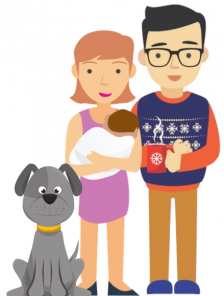Finding a good, affordable rental property can be tricky, especially in urban areas where there is significant demand for good places. You can support someone to find a good rental property by helping them to be as prepared as possible, and by being upfront with them that it is also about being persistent.
Know where to look
Options for looking for a rental property include:
- Searching on the internet
- Browsing TradeMe Property and rental property websites for local listings
- Asking in community social media groups
- Putting an ad in the paper or a sign up on community noticeboards (eg, at the supermarket) to say you’re looking for a property, or check whether anyone is advertising rental properties
- Asking family, friends and workmates if they know of any options
- Approaching real estate agencies and property management companies to see what rental properties they have listed
- Checking noticeboards at university or other places of study (for students).
Tip
Know what you’re looking for
It’s important that a person who is looking to rent a property knows what they want (e.g. size and location of property), what they can afford, and when they are able to commit. When they find something suitable they need to be prepared to get in contact quickly, and have references ready.
If the prospective tenant needs a particular kind of property (e.g. one with disability access, or that will allow dogs), it’s usually best to state this when asking around. There are also a range of general questions the tenant can ask to get an idea of what the rental will be like and to get a feel for how it is to deal with the landlord or their agent, e.g. What’s the neighbourhood like? What whiteware comes with the property? Who is responsible for mowing the lawns? Tenancy Services has a checklist for new tenants that can be a helpful prompt of things to ask or think about.
It’s also very important that the terms and conditions of the tenancy agreement are checked before the agreement is signed, to ensure that the property will suit the tenant’s needs. For example, the tenancy agreement might state that there are to be no pets, or limit the number of people who can live there (though it can still be worth asking the landlord whether these conditions are negotiable).
Tip
Landlords have to say how much the rent is when a rental property is advertised, and they can’t encourage bids for higher rent from prospective tenants. This is called "rental bidding" and is illegal (s 22 G RTA).
Watch out for signs of poor-quality housing
Poor quality housing is a major cause of health problems in New Zealand. Ideally no-one should be renting a place that is mouldy and damp, or hard to heat. When checking out a potential rental property it’s good for a prospective tenant to be on the look-out for signs of an unhealthy home, ie:
- Are there any issues with mould? If the walls have been freshly painted, then signs of mould may have been covered up.
- What heating is available?
- Do the doors and windows close properly?
- Are there main windows that face the sun? Generally, houses that face the north and west will be sunnier and warmer.
- Are there any areas where the floor feels a bit spongy or bouncy under foot? This can indicate rotting floorboards and issues with dampness.
- What ventilation options are there (particularly in the kitchen and bathroom)?
For more information on healthy homes standards for residential tenancies see healthy homes standards.
